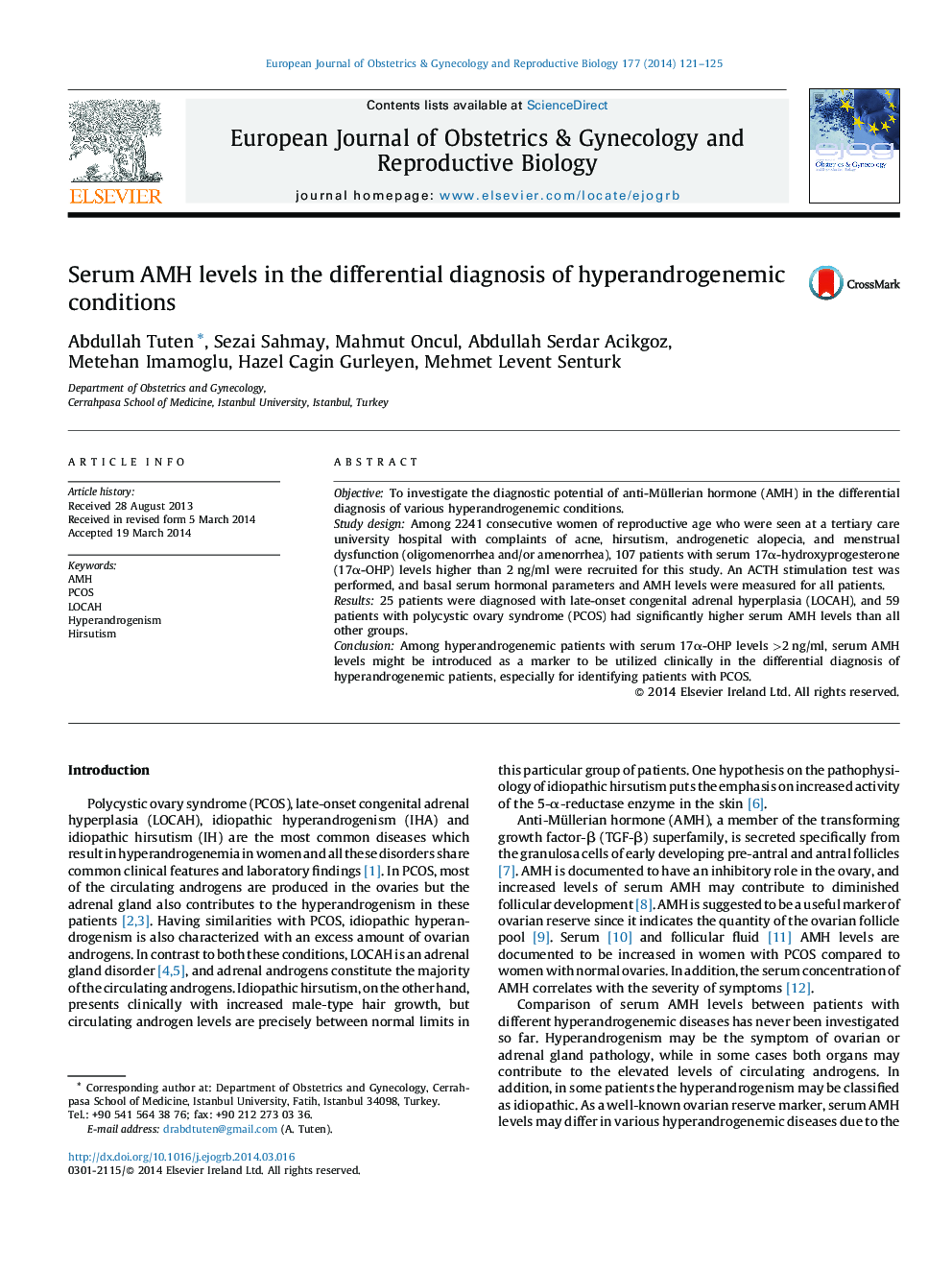| Article ID | Journal | Published Year | Pages | File Type |
|---|---|---|---|---|
| 3919889 | European Journal of Obstetrics & Gynecology and Reproductive Biology | 2014 | 5 Pages |
ObjectiveTo investigate the diagnostic potential of anti-Müllerian hormone (AMH) in the differential diagnosis of various hyperandrogenemic conditions.Study designAmong 2241 consecutive women of reproductive age who were seen at a tertiary care university hospital with complaints of acne, hirsutism, androgenetic alopecia, and menstrual dysfunction (oligomenorrhea and/or amenorrhea), 107 patients with serum 17α-hydroxyprogesterone (17α-OHP) levels higher than 2 ng/ml were recruited for this study. An ACTH stimulation test was performed, and basal serum hormonal parameters and AMH levels were measured for all patients.Results25 patients were diagnosed with late-onset congenital adrenal hyperplasia (LOCAH), and 59 patients with polycystic ovary syndrome (PCOS) had significantly higher serum AMH levels than all other groups.ConclusionAmong hyperandrogenemic patients with serum 17α-OHP levels >2 ng/ml, serum AMH levels might be introduced as a marker to be utilized clinically in the differential diagnosis of hyperandrogenemic patients, especially for identifying patients with PCOS.
